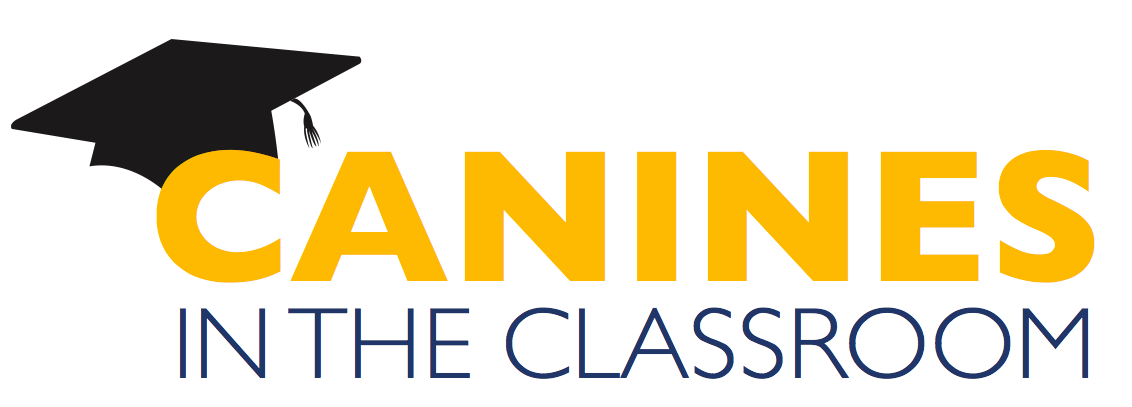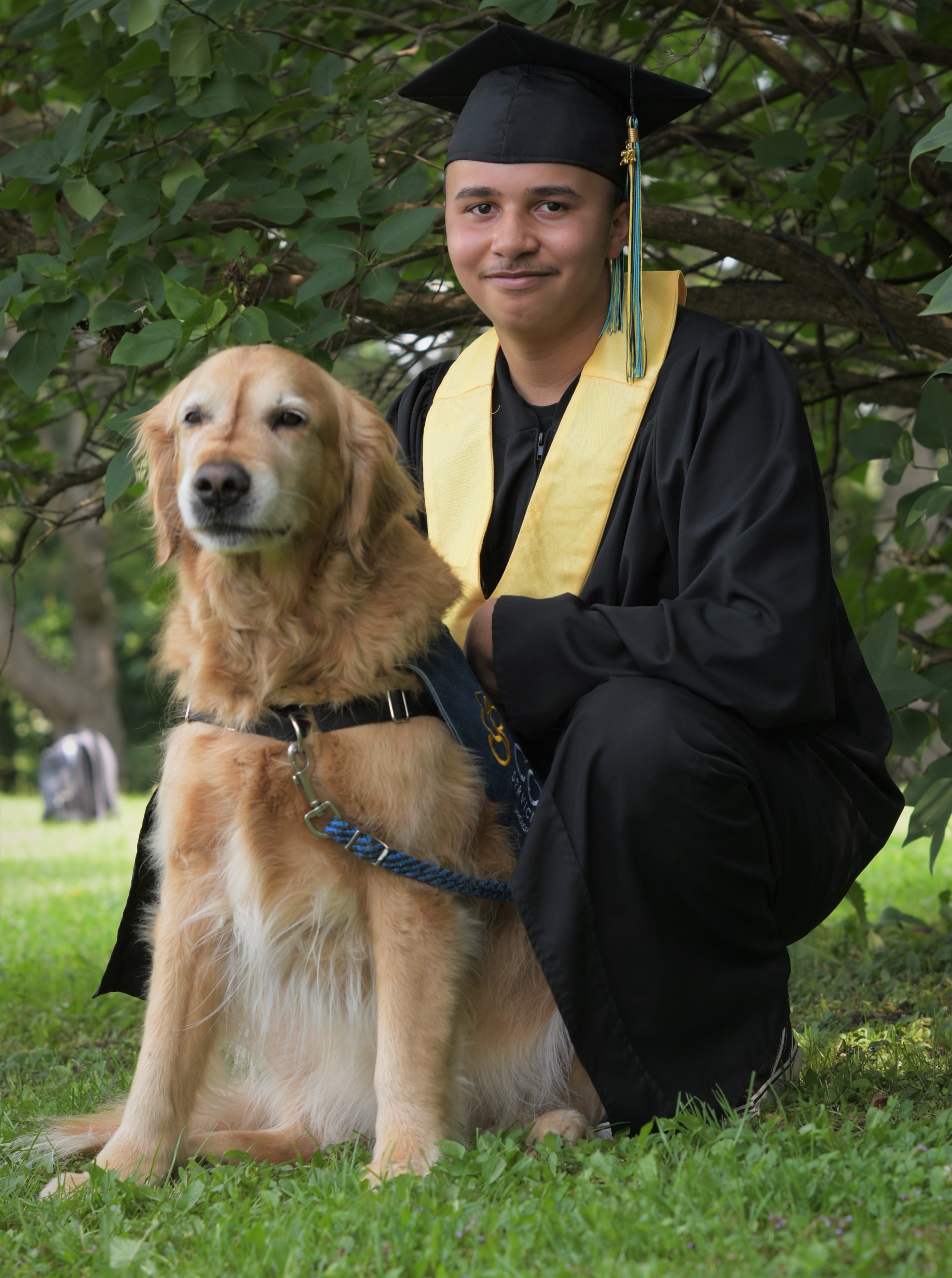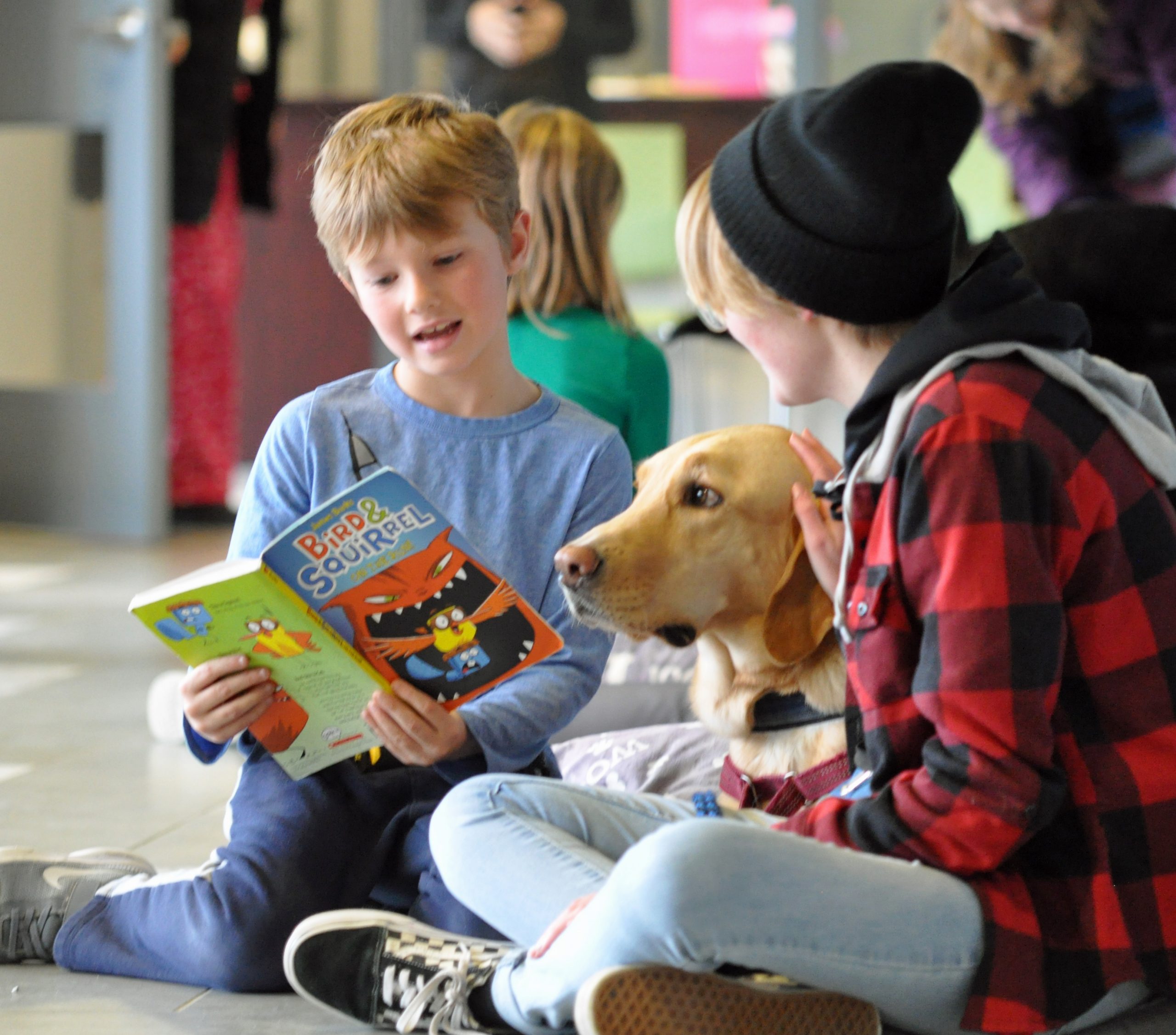CANINES
IN THE
CLASSROOM


CANINES IN THE CLASSROOM (CIC)
The Canines in the Classroom program gives high school students who face challenges that may prevent them from graduating from high school, an opportunity to learn how to train service dogs.
The program, which takes place during the school day, is linked to the Ontario secondary school curriculum. Students can earn high school credits while learning essential literacy and workplace skills.
Students introduce their canine partners to as many as 90 commands which include: opening doors, turning on lights, retrieving out of reach items and helping with dressing – tasks that a person using a wheelchair, for example, might have difficulty doing on their own.
Student trainers take pride in the role they play in enhancing the lives of people with disabilities, who are the future Life Partners of COPE Service dogs-in-training.
A behind the scenes look at our Canines in the Classroom!

READING BUDDY
COPE Dogs are the best listeners!
Canines in the Classroom student/dog teams travel to elementary schools to help motivate young students to read.
The child experiences spending time with someone who encourages reading and is not critical. After all, a dog won’t criticize you if you read too slowly, or you are reading books meant for younger students.
Impact on young children
By reading to a COPE dog, young students who wouldn’t necessarily be comfortable in reading a single sentence in front of other students or teachers, gain confidence while they practice and build literacy skills in a non-judgmental environment.

SENIOR VISITS
As part of the Canines in the Classroom program, student/dog training teams go out into the community to provide companionship to seniors.
As seniors age, and become less mobile they can also become more isolated, particularly if they are housed in hospitals or institutions. Seniors eagerly look forward to visits from the COPE student/dog teams.
On the days that COPE students bring their service dogs-in-training to visit seniors, the effect is magical. Eyes brighten and smiles appear as seniors talk to their canine visitors and student handlers.
The seniors are not the only ones who are affected by these visits. Many high school students do not have the opportunity to interact with seniors, to appreciate their life experience or to understand their needs.
Just as they are proud to be a part of training dogs to help future life partners, high school trainers can also feel good about bringing comfort and companionship to the elderly.
